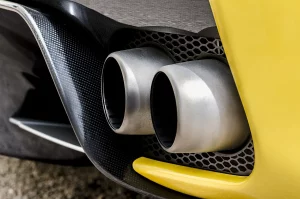As the world becomes more and more environmentally conscious, it is important to understand the impact of our daily activities on the environment. One area where this is particularly important is in the use of cars. Cars are one of the biggest sources of air pollution, producing harmful pollutants that can have a serious impact on our health and the environment. In an effort to reduce the impact of car emissions, the European Union (EU) has established a set of emissions standards called “Euro Emissions Standards”.
Understanding Car Euro Emissions
To understand Euro emissions standards, we first need to understand what pollutants are produced by cars. Cars produce a variety of pollutants, including carbon monoxide (CO), nitrogen oxides (NOx), particulate matter (PM), and hydrocarbons (HC). These pollutants can have a serious impact on our health, causing respiratory problems, heart disease, and other health issues.
To measure car emissions, there are a variety of tests that can be performed. One of the most common is the “New European Driving Cycle” (NEDC) test. This test measures the amount of pollutants produced by a car under controlled conditions. The NEDC test has been used since the 1980s and has been updated several times to reflect changes in technology and driving conditions.
Euro Emissions Standards for Cars
Euro emissions standards are a set of regulations established by the EU to limit the amount of pollutants produced by cars. The first Euro emissions standards were introduced in 1992 (Euro 1), and since then, there have been several updates to the standards. The current standard is Euro 6, which was introduced in 2014.
The Euro 6 emissions standard is the most stringent standard yet, requiring a significant reduction in the amount of pollutants produced by cars. Under Euro 6, cars must produce no more than 80mg/km of nitrogen oxides (NOx) and no more than 4.5mg/km of particulate matter (PM). This is a significant reduction from the previous standard (Euro 5), which allowed for up to 180mg/km of NOx and 5mg/km of PM.
The enforcement of Euro emissions standards is done through a combination of testing and penalties. Cars are tested under controlled conditions to ensure that they meet the required emissions standards. If a car fails the test, the manufacturer can face penalties, including fines and restrictions on sales.
The Impact of Car Euro Emissions
The impact of car emissions is significant and can be seen in a variety of areas. From an environmental perspective, car emissions contribute to climate change by releasing greenhouse gases into the atmosphere. These greenhouse gases trap heat and contribute to rising global temperatures.
In addition to the environmental impact, car emissions can also have a serious impact on our health. The pollutants produced by cars can cause respiratory problems, heart disease, and other health issues. The impact of car emissions on our health is particularly concerning for those who live in urban areas, where air pollution is often higher.
From an economic perspective, the impact of car emissions can be seen in a variety of areas. For example, the cost of healthcare for those who suffer from health issues related to air pollution can be significant. In addition, the cost of addressing the impact of car emissions on the environment, such as through the development of cleaner technologies, can be significant as well.

Future of Car Euro Emissions
The future of Euro emissions standards is an important topic for discussion. As technology continues to evolve, it is likely that we will see further updates to Euro emissions standards. For example, there are currently discussions about introducing Euro 7 emissions standards, which would be even more stringent than the current Euro 6 standard. These new standards would likely require even lower emissions of nitrogen oxides and particulate matter, as well as stricter requirements for other pollutants such as carbon monoxide and hydrocarbons.
Another factor that will impact the future of Euro emissions standards is the emergence of electric cars. Electric cars produce no emissions while driving, meaning they have the potential to significantly reduce the impact of car emissions on the environment and our health. As more people switch to electric cars, we may see a shift in the way that Euro emissions standards are enforced.
However, it is important to note that the production of electric cars still has an environmental impact, particularly in terms of the production and disposal of batteries. Therefore, while electric cars are certainly a step in the right direction, there is still work to be done to ensure that they are truly environmentally sustainable.
The role of government and car manufacturers will also play a significant role in reducing car emissions in the future. Governments can incentivize the development and use of cleaner technologies, such as electric cars, through subsidies and tax breaks. Car manufacturers can invest in research and development to create cars that produce fewer emissions, and can also work to improve the efficiency of existing technologies.
Final Thought
Euro emissions standards are an important tool in the fight against air pollution. By setting limits on the amount of pollutants that cars can produce, Euro emissions standards help to protect our health and the environment. However, there is still work to be done to reduce the impact of car emissions on our world. As technology continues to evolve, it is important that we continue to update and enforce Euro emissions standards, while also exploring new technologies and approaches to reduce the impact of cars on the environment and our health.
